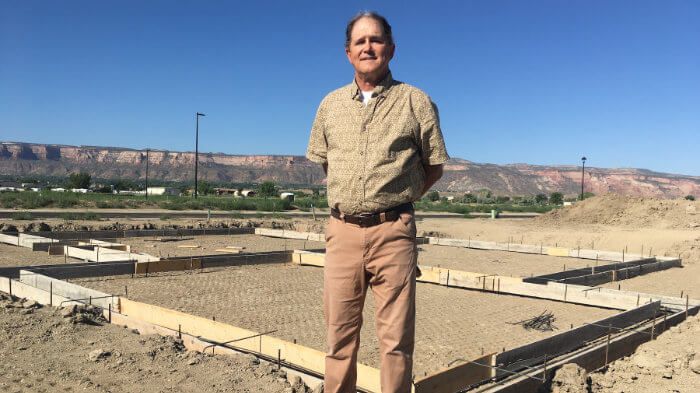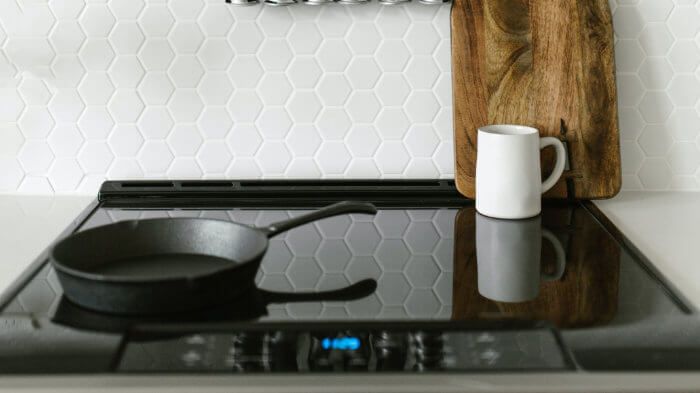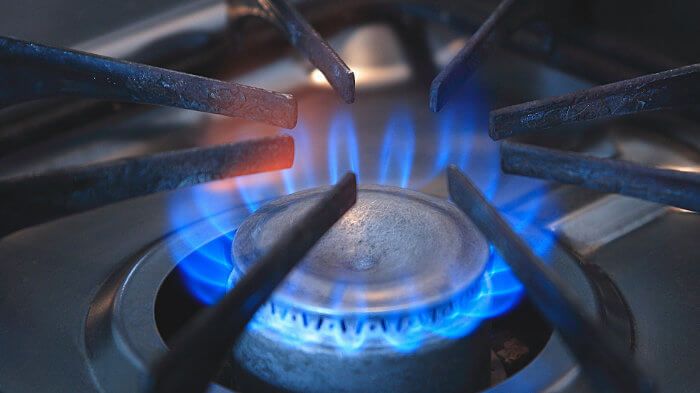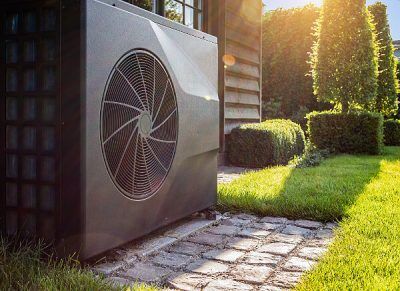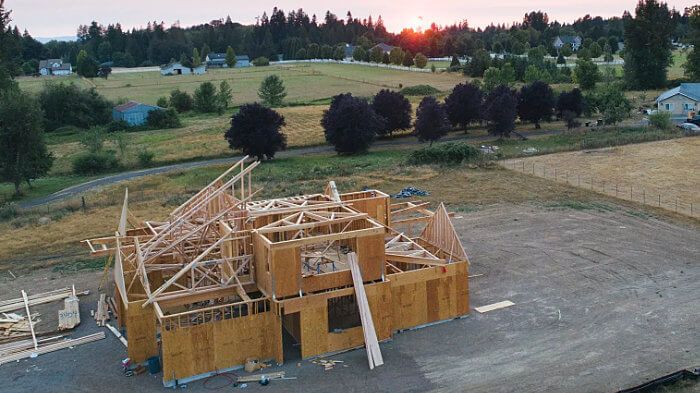Author: Kim Adams
The ‘Future of Housing’ Has Arrived in All-Electric Colorado Developments
Grand Junction homebuilder Darin Carei decided to forgo a natural gas hookup to his Brookfield South Residential subdivision after learning the cost to bring in gas lines would be equal to installing solar panels on each of the houses that overlook the red-rock walls of Colorado National Monument in the distance.
His company, Senergy Builders, has built energy-efficient Energy Star-certified homes since 2011. With the Brookfield subdivision, Senergy is taking the clean energy concept a step further by not adding fossil fuel to the home; instead he’s building all-electric, solar-powered net-zero homes.
Photo Courtesy of Sharon Sullivan for Colorado Newsline
City and County of Denver
40% of project cost, up to $1,500 for “high efficiency” air-source heat pumps, including mini-splits,…
How Do Induction Stoves Actually Work?
We dig into the nerdy nuts and bolts behind induction cooking and how exactly it creates a speedy, precise and fossil-free cooking experience.
How Electrification Became a Major Tool for Fighting Climate Change
The United States still gets most of its energy by setting millions of tiny fires everywhere. Cars, trucks, homes, and factories all burn fossil fuels in countless engines, furnaces, and boilers, creating pollution that heats the planet. To tackle climate change, those machines will need to stop polluting. And the best way to do that, experts increasingly say, is to replace them with electric versions — cars, heating systems and factories that run on clean sources of electricity like wind, solar or nuclear power.
Cheap and green: Heat pumps take hold around the world
2022 was a big year for the humble heat pump. In the U.S., more people bought heat pumps for their homes than traditional fossil-fuel furnaces. In Poland, the market for heat pumps more than doubled. China is installing more than any other country.
Based on refrigeration technology that’s more than 200 years old, the heating contraptions have gained popularity thanks to their green footprint and low cost to operate.
Heat pumps are having a moment in Colorado, but do they really work in the bitter cold? Yes.
There was a touch of anxiety in the home of Jon and Rachel Rea as a bomb cyclone, with its plummeting subzero temperatures, approached Colorado in December, for the couple no longer had a gas-fired furnace in their basement.
The Great Gas Stove Debate Has Been Reignited
Last week, Richard Trumka Jr., a US Consumer Product Safety commissioner, sent emotions boiling over when he said in an interview with Bloomberg that the agency was considering banning gas stoves, citing the fact that over 12% of childhood asthma cases in the US are the result of gas stove usage.
Summary of Building Electrification Rebates for 2023
Here is a summary of how all of these incentives add up for homes in Colorado.
Incentives for Existing Homes
In 2023 there are utility rebates, state tax credits, and federal tax credits for heat pumps, which we summarize below. We also provide some suggestions for choosing a heat pump system that makes the most sense for your application, considering all the rebates available.
Some homeowners have heard about the home energy rebate programs that will become available in 2024 through funding from the Inflation Reduction Act, and are putting off decisions about installing a new heat pump for now, thinking the rebates will be greater next year. However, in 2024, households that are above 80% of average median income (AMI) are not likely to get additional heat pump rebates beyond those available in 2023. (You can find Colorado’s 80% AMI levels by county and number of people in the household here. For example, the current “80% of AMI” for a family of four in Denver is about $99,280.)
As we point out in our article below, the rebates and credits available in 2023 should more than cover the incremental cost of installing a heat pump rather than air-conditioning system. So, if you are considering a new heat pump and your household falls above the “80% of AMI” level, why wait?
Utility and Local Government Rebates
Generally, most Colorado utilities, including Xcel Energy and Tri-State’s member co-ops, have two levels of rebates. Tier 1 heat pumps (and rebates) are referred to as “standard efficiency” or “high efficiency” air-source heat pumps (ASHPs). Tier 2 rebates are for “cold-climate” ASHPs. Cold-climate heat pumps are designed to operate with higher capacities (more heat output) and higher efficiencies, at lower temperatures such as down to 0 degrees F; and they generally have variable-speed compressors. Cold-climate heat pumps typically cost more (by $3,000-$4,000) than a similarly sized Tier 1 heat pump.
The table below shows the rebates and minimum efficiency requirements for Tier 1 and Tier 2 heat pumps for Xcel Energy and Tri-State member co-ops.
Utility and HP Tier |
Rebate Amount |
HSPF and SEER |
Other Requirements |
|---|---|---|---|
| Xcel Energy | |||
| Tier 1 – “high efficiency” heat pump | $1,500 | HSPF 9.0+, SEER 15.0+ | NA |
| Tier 2 – “cold-climate” heat pump | $2,000 | HSPF 9.5+, SEER 18.0+ | Variable-speed compressor, HP listed on NEEP’s cold-climate list |
| Tri-State Member Co-ops | |||
| Tier 1 – “high efficiency” heat pump | 50% up to $1,800 | HSPF 9.0+, SEER 15.0+ | NA |
| Tier 2 – “cold-climate” heat pump | 50% up to $2,400 | HSPF 10.0+, SEER 16.0+ | 3+ compressor stages or variable-speed |
All the rebates for heat pumps and HPWHs from utilities and local governments in Colorado are listed on Love Electric at: loveelectric.org/rebates/. Note that several local governments, including Denver, have rebates that are in addition to the utility rebates. And the utility and local government rebates are in addition to the federal and state tax credits and tax exemptions described below.
State Tax Incentives
In 2022 Colorado approved tax credits for heat pumps and HPWHs, beginning in the 2023 tax year. The equipment cost is eligible for a 10% state tax credit, and in addition, is exempt from the state sales tax, which is 2.9%. The heat pump or HPWH must be ENERGY STAR-certified. (Note that Colorado utilities’ Tier 1 requirements are generally at least as stringent as the Energy Star requirements.)
Federal – IRA Tax Incentives and Rebates
Under the Inflation Reduction Act (IRA), heat pumps and heat pump water heaters (HPWHs) are eligible for a 30% tax credit, beginning in tax year 2023, up to a limit of $2,000 per taxpayer. In addition, home energy efficiency improvements are eligible for a 30% tax credit up to $1,200.
To qualify for the tax credits, HPWHs must be ENERGY STAR-certified, and heat pumps must meet the following minimum efficiency requirements:
For Northern States (including Colorado, Utah, Wyoming):
- Must meet the min. HSPF and SEER ratings as shown below:
Type of HP system |
SEER/SEER2 |
HSPF/HSPF2 |
|---|---|---|
| Ducted | 16.0/15.2 | 9.5/8.1 |
| Ductless | 16.8/16.0 | 10.6/9.5 |
- Must have a capacity ratio of >58% at 17 degrees F, relative to the capacity at 47 degrees F.
- Must have a coefficient of performance (COP) at 5 degrees F of at least 1.75
The Consortium for Energy Efficiency (CEE) has a list of heat pumps that meet these minimum requirements here. Because of the capacity and COP requirements, most heat pumps on the CEE list are also cold-climate heat pumps, and therefore they tend to be more expensive than the Tier 1 heat pumps discussed above.
Our Suggestions for Heat Pump System Selection and Combining of Rebates
Many Colorado homes have central air-conditioning (AC) and gas furnace systems. Below we discuss combining the rebates in relation to this scenario. (We discuss other heating system scenarios and heat pump applications here.)
We suggest that you ask three potential contractors for estimates for a heat pump system sized to handle your home’s heating load down to 25 degrees F, without exceeding the capacity of your ducts. Use your existing gas furnace for temperatures below 25 F, or replace your gas furnace with a new one if it is more than ~15 years old, does not have an ECM motor, or cannot be reasonably well matched with the new heat pump. (The new heat pump should be from the same manufacturer as the furnace if possible, and its controls must be able to communicate with the furnace.) Ask the contractors for estimates for two types of heat pump systems: a) one that meets your utility’s Tier 1 requirements, and b) one that will meet the CEE requirements (see above). CEE-qualified heat pumps may be slightly more efficient (by 10-15%), and may allow you to operate the heat pump down to a slightly lower outdoor temperature (if the existing ducts can handle that), reducing your home’s carbon emissions from heating. However, if the CEE-qualified heat pump exceeds the cost of the Tier 1 heat pump by $2,000 or more, then it may not make sense for you to install the more expensive system. (The maximum federal tax credit is $2,000.)
Especially if you need to replace your existing furnace (according to the above criteria), you should also ask for an estimate for an all-electric heat pump system. This would include a cold-climate heat pump system sized to provide your home’s full heating load down to a temperature of -1 degrees F (for Denver), and backup electric resistance heating sized to heat the home for the few days per year with temperatures down to -10 degrees F or so. This would eliminate your use of gas for heating your home and further reduce your carbon emissions. However, this type of system may require duct system and/or electrical panel upgrades, and will cost $5,000 – $15,000 more than the Tier 1 heat pump ($0 – $10,000 more if the Tier 1 system needs a new furnace). Also, to avoid over-sizing or over-using the backup electrical strip heating, we suggest making sure the home is well insulated and air-sealed before installing the heat pump system.
Here is a summary of our tips:
- Size the heat pump to match your existing duct system and electrical capacity, which will avoid costly upgrades to these systems.
- With these constraints in mind, ask your contractors for quotes for a Tier 1 heat pump that will provide the home’s full heating load down to an outdoor temperature of 25 F (if possible). With a dual-fuel system (with backup furnace), this will cut your annual gas use by about 80%.
- Also ask for quotes for a similarly sized heat pump system which meets the CEE requirements,* and then compare the total costs (including the federal tax credit) and possible benefits.
- You could also ask for a quote for a cold-climate heat pump system with no backup furnace and compare the total costs and benefits.
*On the NEEP website, soon it will be possible to find cold-climate heat pumps which also meet the CEE requirements, which will be a convenient way of finding heat pumps that qualify for your utility’s Tier 2 rebates in addition to the federal tax credit. Note that for Denver residents, Denver offers a $3,500 rebate for cold-climate heat pumps, in addition to Xcel Energy rebates.
Summary of Rebates for Existing Homes
The example in the table below summarizes how these rebates and tax incentives add up in 2023, if the heat pump meets all the relevant requirements.
Heat Pump system cost |
Federal tax credit (30% up to $2,000) |
State tax credit plus sales tax exemption, on equipment costs (12.9%) |
Utility rebate – Tri-State member co-op |
Total amount of rebates and tax credits |
Final cost of heat pump system with rebates |
|---|---|---|---|---|---|
| 4-ton, efficient, non-cold climate (Tier 1) heat pump – $16,000 total ($8,000 for equipment) | 0* | $1,032 | $1,800 | $2,832 | $13,168 |
| 4-ton, cold-climate heat pump on CEE and NEEP lists – $19,500 total ($9,750 for equipment) | $2,000 | $1,260 | $2,400 | $5,660 | $13,840 |
*Assuming the Tier 1 heat pump does not meet CEE requirements.
Incentives for New Homes
Federal Tax Incentives and Rebates
The federal tax credits for air-source heat pumps and for heat pump water heaters (HPWHs) do not apply to new homes. (The federal tax credits for ground-source heat pumps do apply to new homes.)
State Tax Incentives
The homebuyer is also eligible for the state tax credits mentioned above (10% income tax and 2.9% sales tax) for the equipment costs of the heat pump and HPWH in the new home.
Utility and Local Rebates
Some utilities have additional incentives for efficient and electric new homes, which are summarized here. (Scroll down to “Rebates and Tax Credits for Builders.”)
Summary for New Homes
Most of the utility rebates go to the new home builder, but the state tax credits go to the home buyer. For example, let’s say a new home has a 3-ton cold-climate heat pump and HPWH with total equipment costs of $12,000. In 2023, the home buyer would receive state tax credits/exemptions of $1,550. If the home is in a Tri-State Co-op service territory, the builder would also receive a rebate of $2,150 for the heat pump and heat pump water heater.
Moving the Market for Efficient and Electric New Homes
Each year, about 50,000 new homes are sold in Colorado, with slightly more than half of these single-family homes. So far, most of these new homes continue to rely on natural gas for heating, and are generally built to the minimum efficiency standards of the local building code. This status quo aspect of the new homes market only exacerbates the climate crisis.
Although a modest trend at this point, some builders/developers are building new homes that are more energy-efficient, with better indoor air quality and minimal carbon emissions; and people are happy to buy these types of homes as they become available. These homes have the following features:
- Healthy – electric cooking and heat recovery ventilation
- Efficient – good air sealing, insulation, high quality windows
- Electric – efficient heat pump for space heating, heat pump water heater
Many of these homes also have solar PV systems, which further reduces the electricity costs and carbon emissions.
In 2019, Rainer and Karen Gerbatch bought a new, all-electric home in the Geos neighborhood in Arvada. Their “solar cottage” is highly efficient, is heated with a small geothermal heat pump, and the solar PV system generates more electricity than the home consumes annually. The Gerbatch’s also love that the home is very quiet and comfortable, with very low energy costs. In addition, the home cost slightly less than an average home of its size in Arvada.
To promote these types of new homes, the Beneficial Electrification League of Colorado (BEL-CO) is launching a New Homes section of our Love Electric website. (See loveelectric.org/new-homes. ) The website will help educate new home buyers about the benefits of healthy, efficient, and electric new homes and provide resources including:
- Case studies of new all-electric homes in Colorado
- Developments with these types of homes for sale.
- Lists of architects and builders who can help you build a custom all-electric new home.
A growing number of builders are building efficient, “green” new homes such as Energy Star-certified homes, but many are hesitant to go to the next level, towards all-electric (or mostly-electric) new homes. To help these builders take the next step, the Love Electric New Homes section provides resources including:
- Examples of healthy, efficient, all-electric new home developments and custom homes
- Utility, federal, and state rebates for zero-energy and all-electric new homes
- Local building codes that encourage or require all-electric new homes
- Lists of qualified heat pump installers.
As local building codes are updated, new homes built in Colorado will become more energy efficient. Utility rebates and state and federal tax credits will also encourage installation of more heat pumps. BEL-CO hopes to complement these positive forces and contribute to a shift in the market towards high-performance homes that will save people money on their energy bills, offer superior comfort and indoor air quality, with minimal carbon emissions.
